Two-thousand Steps
Seeing Time
Time is relative, but is place? What about space? Knowing the time of day or year based on a sight or sound is eye-opening.
It’s empowering to be in touch with our surroundings in a meaning-ful way; it’s how we combat the polar opposite: a timeless and placeless existence. Sometimes it seems as though humanity’s objective is to homogenize the everyday, no matter the time or place. Climate-controlled car and house, cubicle, garage, and weather app reify a mono-culture.
I understand why.
It’s irritating to change plans because of a thunderstorm or need to work in a sweltering hot office. Pressure to be productive (and make progress) in work and school mandates a degree of uniformity, consistency, and efficiency.
Simultaneously, nature’s clock ticks to a different rhythm.
Yesterday I walked 2,000 steps (an out-and-back loop, not on a trail) into the forest behind my house, a familiar area. This walk was a short distance, and during it I viewed the:
past (history)
future (hopes)
present (my bias)
You’d see something else, just as I would have my own takeaways after walking in your backyard, neighborhood, or streetspace.
Bear Claw on a Beech Tree
Vermont had a bear bounty in effect from 1831 to 1975, with payments ranging from $2 to $15 per bear. In 1941, the state designated black bears a game animal, and between 1941 and 1975, the state paid out a total of $17,389 to people who suffered damage from bears. According to Vermont Fish and Wildlife’s Big Game Management Plan, the Department has stabilized the black bear population to between 7,000 and 8,500. The VT bear harvest has steadily increased since the early 1990s.
Back bears make “nests.” They aren’t really nests, but bunches of beech branches that break in the process of bears picking beech nuts in the crown of the tree.
Spring Plants
Trout Lily is named as such because its emergence is in sync with the beginning of trout season. Other species deliver a similar message that correspond plant (and animal) behavior with time. Shadbush/Serviceberry comes to mind. [If you know of others, please share them in the Comments or directly with me]
Yellow Birch
I often find these trees in disturbed areas, including places where I suspect fire or aggressive logging occurred.
They can take root on exposed rock. This specimen is growing on bare rock.

I suspect farmers burned the area to create pasture for sheep (or other livestock). The majority of the older trees are at most 80 years old, and there is evidence of fencing.

North Side
We can tell North by the amount of moss growing on a tree. A tree in a natural woodland environment (i.e., not a lawn) will have moss growing on its north-facing half since that side is protected from the sun’s drying rays. This is a helpful fact if you find yourself in a flat forest with few other landmarks to orient yourself. In practice, it’s accurate 50 percent of the time; I consider it to be one piece of the orientation puzzle.

Muzzleloader
Hunters could always use muzzleloading guns as long as firearms were allowed. I find this sabot on the forest floor. A sabot is a plastic sheath that surrounds a copper or lead slug when fired from a muzzleloader gun (or shotgun).
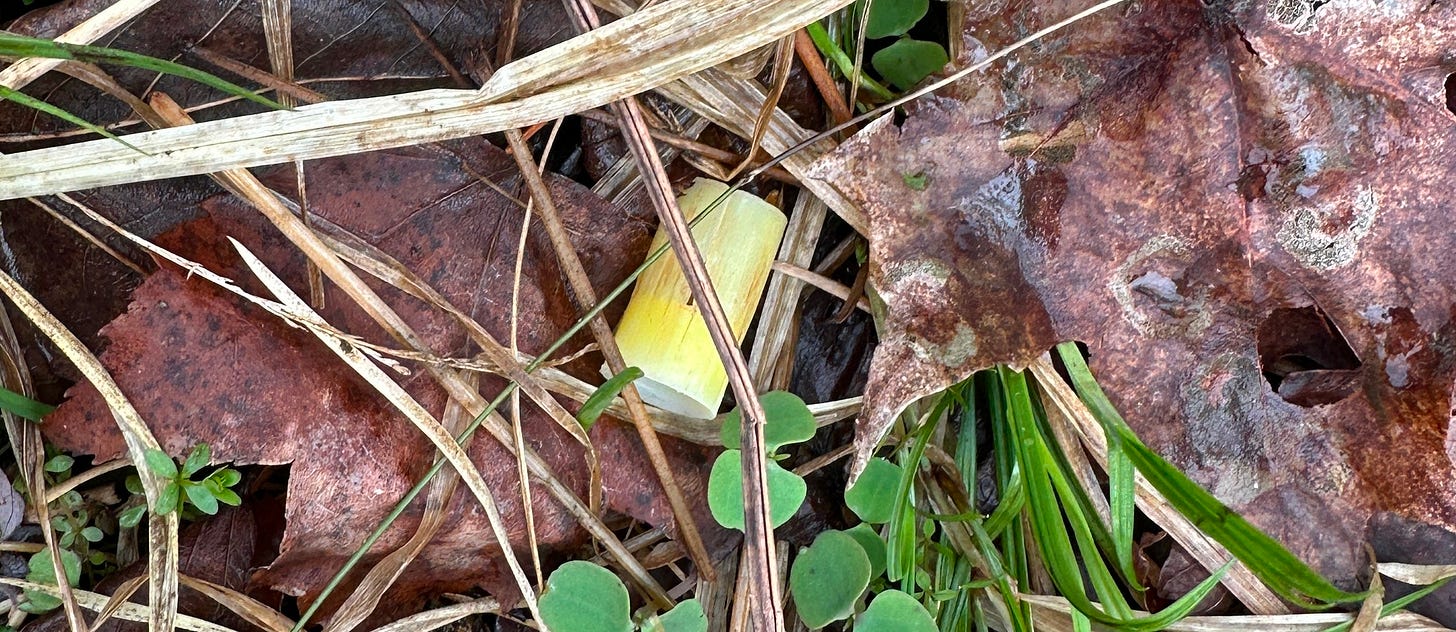
There wasn’t a designated muzzleloader season for whitetail deer until 1986.
Carved Initials
In spring 2020, my kids and I built and maintained trails. My son, twelve at the time, carved his initials into this beech tree with a pocket knife.
Beech trees are common on my walk. I think of them as sunshine “hogs” of the forest. They are almost impossible to kill by cutting alone.

One year after girdling this beech tree, it continued to grow out of the opening left by the chainsaw.
I try to remove some of the beech to encourage other species of trees to grow. I learned from my forester that, based on the abundance and shape of beech trees here, there are actually too many deer in the area. Beech trees, as a result of being overgrazed, grow like bonsai (deer do not prefer beech buds, stems, or leaves). They only eat beech when they have few other choices. Beech nuts are another story.
Rabies
I find a rabies packet that was dropped by a plane last summer.

Flowing water
A brook on our property flows into the Brown’s River and then to the Lamoille River, then into Lake Champlain.
Maintaining the logging road I walk on reduces the amount of sedimentation that ends up in Lake Champlain. Poor logging practices result in forest soil eroding into small brooks like this, which impact aquatic life and ultimately the state’s largest water body. As I walk, I clear the water bars with my foot.
Tip Up
All of the tip-up trees I find are facing in the same direction. Their age also tells me how long ago the wind that caused their tipping occurred. I estimate the storm that toppled this tree occurred ten to fifteen years ago.

Tree Stand
A treestand overlooks a clear-cut with hinge cuts and planted trees. The purpose of this work is to create a habitat for deer.
Hinge cutting of trees works well to create habitat cover and food for deer.


Deer were nearly hunted to extinction in Vermont due to market and subsistence hunting. Seventeen deer from New York were introduced in 1878 to repopulate the herd.
Maple Tap
This hole in the bark of a maple tree is from a maple tap. The tap was “tapped” into the tree after I drilled a hole. Sap flowed out of the hole, into the tap, and into a holding tank. I boiled the sap to make maple syrup. This hole is healing nicely and tells me the tree is healthy.
Fiddleheads of Ferns
All fiddleheads of ferns are called fiddleheads, but not all fiddleheads are edible.

This fern (Cinnamon Fern, Osmunda cinnamomea) is inedible. Anecdotally, two old-timers have told me it’s technically edible, but it will give you a stomachache. It arrives sooner than the Ostrich Fern (Matteuccia struthiopteris), which will not give you a stomach ache. I grew up eating fiddleheads of the Ostrich Fern, and sometimes they’re on the menu of restaurants in the northeastern US. Ostrich Fern fiddleheads will be here soon.
Ash Tree
There are many ash trees, but an invasive pest, the emerald ash borer, has been detected nearby. These ash trees remain healthy.
Moose
I find a set of moose tracks, slopping through the muddy leaves. There aren’t many moose around here, but sometimes I see them. Three years ago, I captured a moose on a game camera. I’m glad to see at least a little sign, though it seems less than in previous years. Vermont did not have a modern moose hunting season until 1993.

*One of the best actions you can take if you value my essays is to click the heart (❤️) at the top and bottom of this page, as well as share it with others. Doing so will bring it to the attention of other readers.





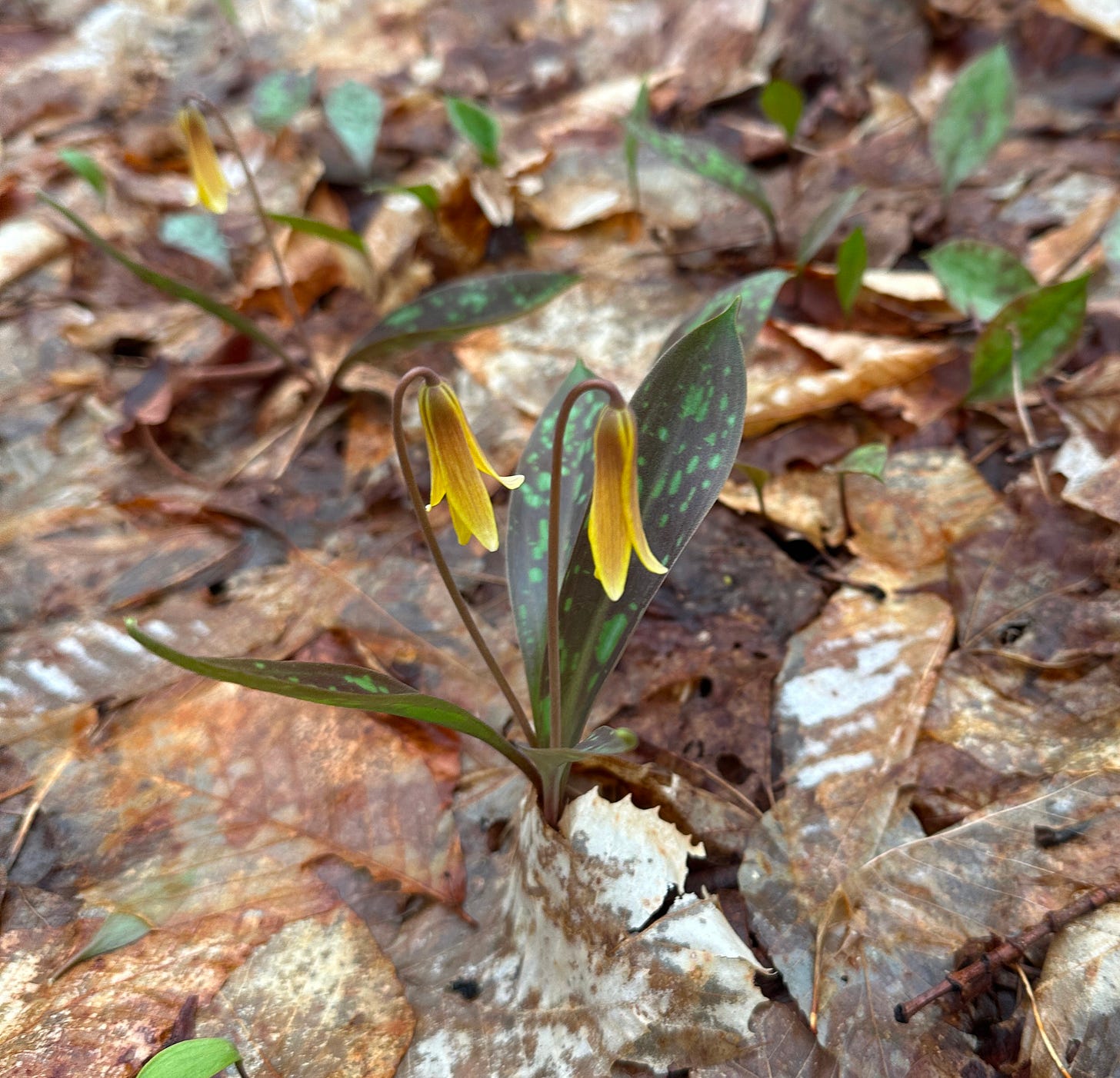


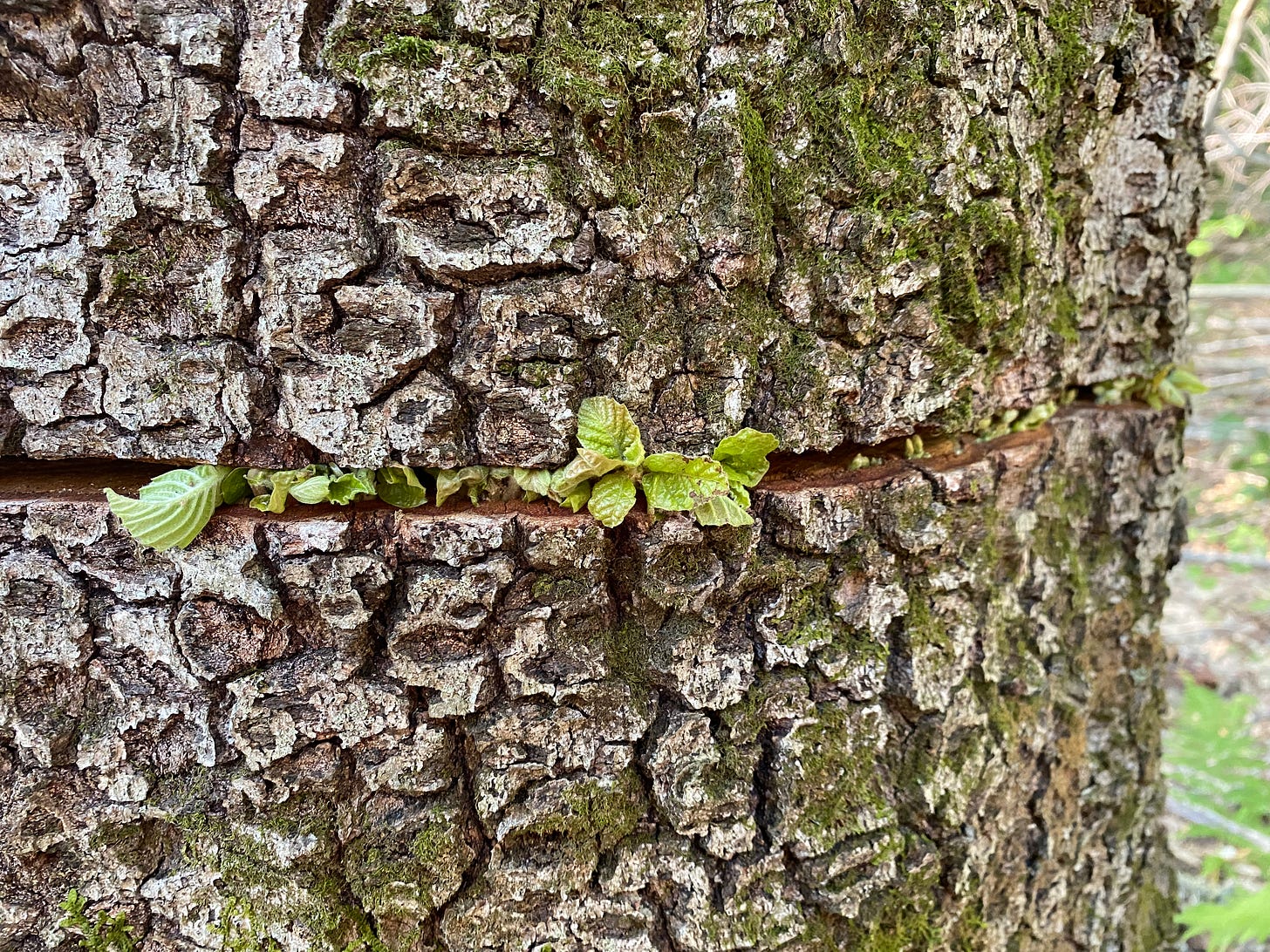

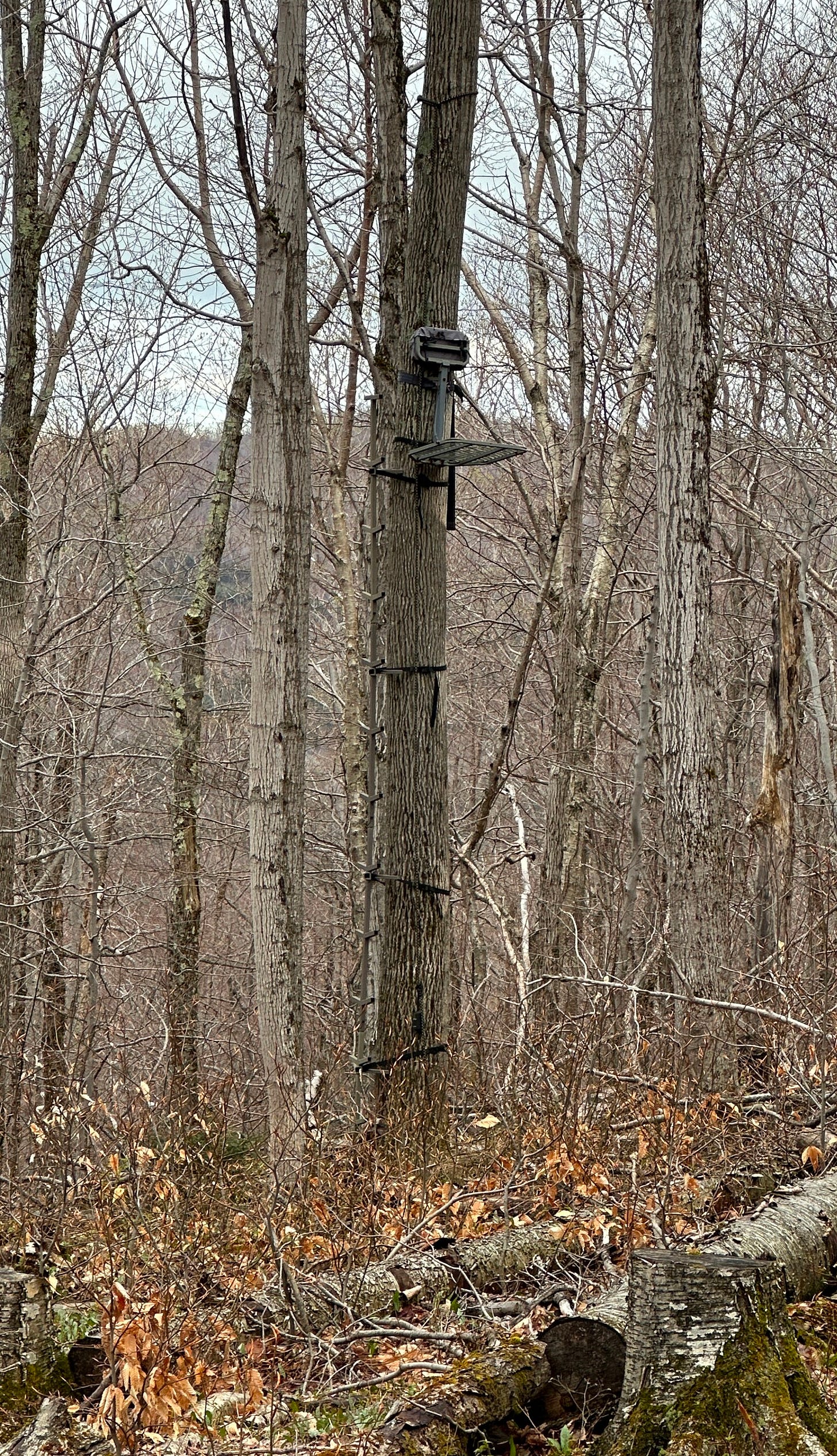
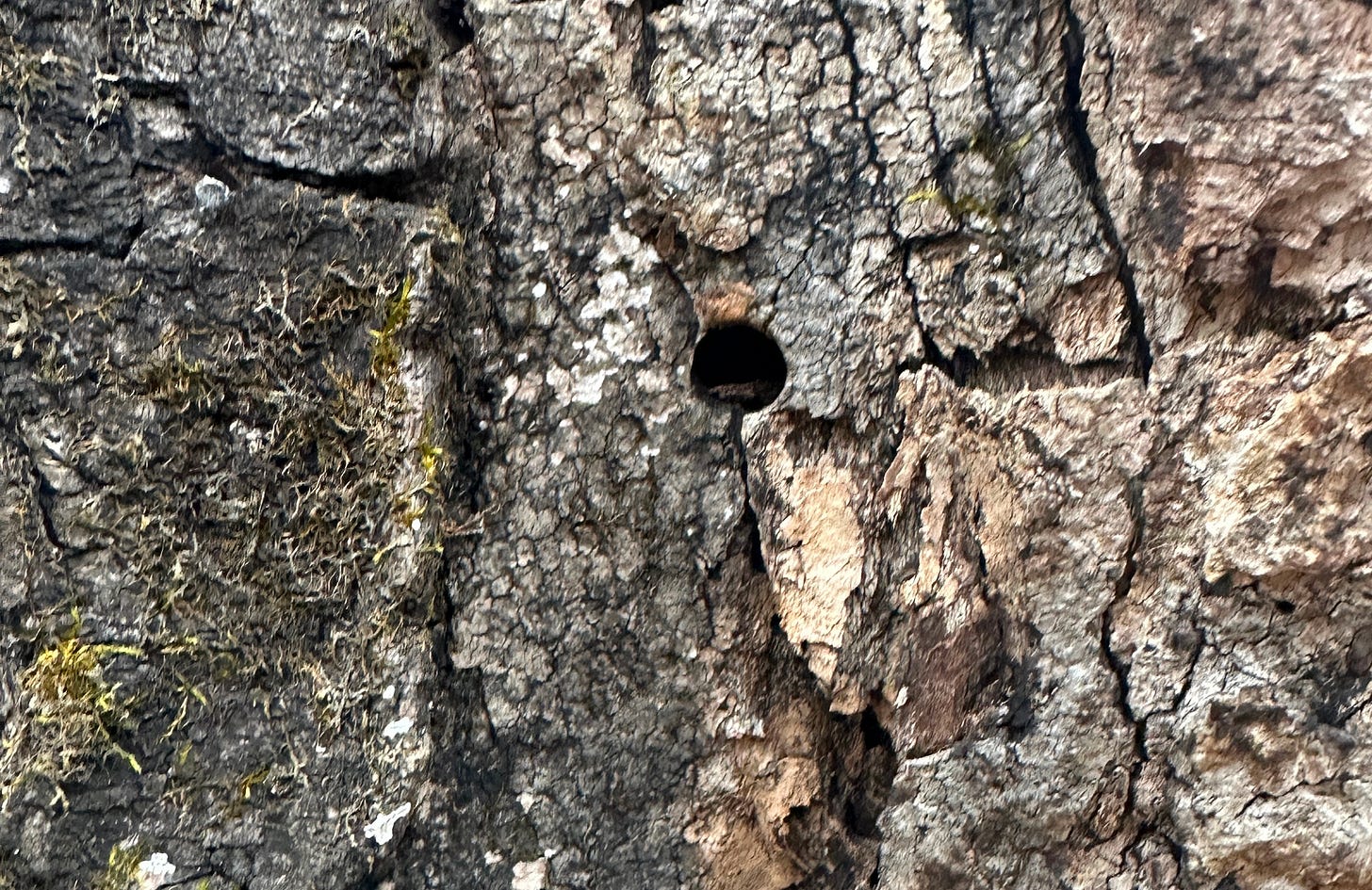


Your place-based knowledge is so deep, always enjoyable to read.
The skill of attention and knowledge application in nature. Powerful 👊🏻